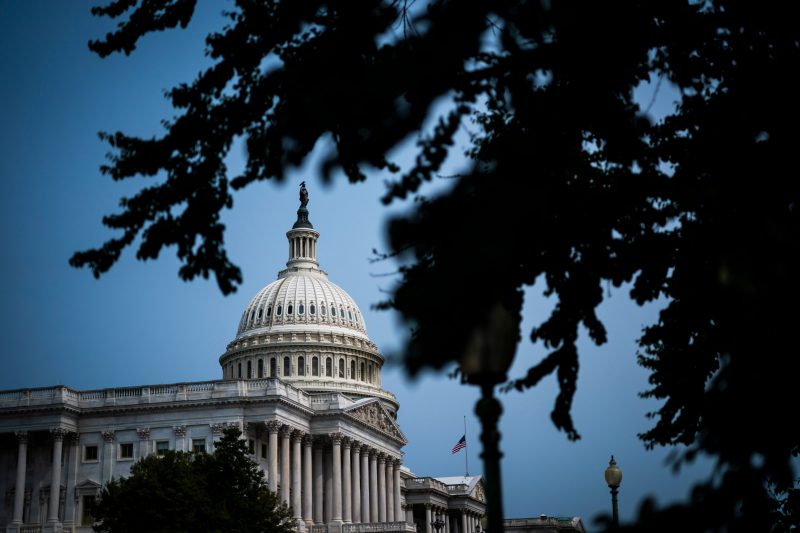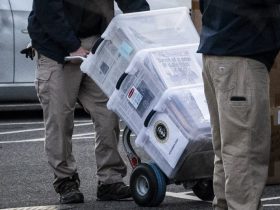No matter how the nation’s debt limit debate is resolved, there’s a related, but less noticed issue that will continue to plague America well after the partisan recriminations subside.
“The federal government faces an unsustainable long-term fiscal future” is the blunt warning in a new report from the Government Accountability Office, the government’s main auditor.
Washington is dawdling on a fiscal path that cannot be tolerated, and the predicament is unlikely to be resolved soon.
The $1.4 trillion federal budget deficit in fiscal 2022 was the fourth largest in U.S. history. Yet, that amount represents a 50 percent drop from the year before. Higher tax revenue and lower coronavirus pandemic relief spending contributed to the decline. At the same time, the nation’s debt held by the public grew by $2 trillion, for a total of $24.2 trillion. Budget deficits are annual expenditures over revenue and increase the debt. The nation’s debt amounts to the accumulated deficits over time.
As wonky as deficit and debt debates are, the real-world consequences can be severe. They include painful choices like reducing expenses, which Republicans generally favor. That could mean cutting programs that serve the poor, the sick and the old. Raising taxes on the rich, which Democrats favor, is another option, but Republicans object. Finding some combination of more revenue and less spending is the long-term challenge our current hostile, two-party system finds difficult to navigate.
But without a durable solution, “the underlying conditions driving the unsustainable fiscal outlook pose serious economic, security, and social challenges if not addressed,” Gene L. Dodaro, comptroller general of the United States and GAO’s head, wrote to President Biden and congressional leaders in a letter accompanying the May 8 GAO report. “Congress and the administration will need to make difficult budgetary and policy decisions to address the key drivers of the debt and change the government’s fiscal path.”
In this seventh annual report on the nation’s fiscal health, GAO outlined points that Congress should consider in a fiscal sustainability plan. That plan should address factors that propel deficits, but the solutions also divide partisans.
This report sounds much like the first, issued in 2017, when Dodaro declared himself “deeply concerned” about the nation’s finances. Yet, during an interview he sounded more determined than discouraged about continued congressional dithering. The magnitude of fiscal problems was demonstrated by GAO’s decision to issue a rare press release on the report. Of GAO’s 427 reports this year, only eight were announced with press releases.
With its dogged political neutrality, GAO again urged Congress to develop a long-term plan for a sustainable fiscal future. The auditors said the plan should:
• “Assess the drivers of the primary deficit, such as mandatory and discretionary spending as well as revenue — including tax expenditures, such as deductions and tax credits.”
• Consider alternatives to dysfunctional, debt limit crises, like we are now experiencing, including setting a debt limit as part of the budget process and allowing Treasury “to propose a change in the debt limit that would take effect absent congressional disapproval.”
• Incorporate rules and goals to manage debt by controlling spending and revenue to meet debt targets.
“Right now, there are no guardrails,” Dodaro said. “We have no national policy. How much debt do we want to have? How much do we think we can afford to have?”
But rather than planning ahead, the political debate is framed around how much “to spend in the next year,” Dodaro added. “So we’re not taking a long-term view.”
Politicians are loath to make those difficult decisions.
“Unfortunately, political incentives in Washington are such that most members of Congress want to avoid fiscal policy as much as they can get away with,” said David Ditch, a senior policy analyst at the conservative Heritage Foundation. One benefit of the current debt limit debate, he added, is it “forces members to start thinking about” fiscal issues.
That means confronting the significant issues that foster long-term unsustainable deficits, including, Dodaro said, “underlying demographic changes that are driving up health care costs at a time when our population is also aging” and living longer. He expects life expectancy rates “to get closer to normal patterns,” following the coronavirus induced reductions.
Longer lives mean greater Medicare and Social Security costs. “And this is particularly an issue at a time of rising interest rates,” he added, that increase the government’s cost to borrow money.
But “the fiscal deficit is not the only deficit we face,” said Sharon Parrott, president of the liberal Center on Budget and Policy Priorities. “We also have a deficit in the investments that broaden opportunity and improve well-being, including investments in children, workers, marginalized communities, health care and education. Failing to make these kinds of investments keeps our child poverty rate higher than in other wealthy countries, as just one example, with research documenting how this shortchanges their future and the nation’s as a whole.”
Among the options that GAO presented to deal with the fiscal dilemma is raising tax collections in a way that won’t raise tax rates, which Republicans reject. That’s closing the tax gap — the difference between what taxpayers owe and the amount they pay. Last year, officials estimated the net tax gap for 2014-2016 was $428 billion.
“Given the size of the tax gap each year, even modest increases in compliance could yield significant financial benefits and help improve the government’s fiscal condition,” GAO reported. “Improving tax enforcement and addressing the tax gap is a persistent issue and is on our High-Risk List.”
GAO has previously recommended “targeted legislative actions to reduce the tax gap,” including giving the IRS authority to correct certain errors in information provided by taxpayers and setting professional requirements for tax preparers.
So far, Congress has not acted.
That leaves America without “any national policy or sort of guiding light road map toward what kind of fiscal policy we want to pursue, which would give a lot more certainty to average people, as well as the markets, as well as all those who rely on all the federal government’s activities,” Dodaro told The Washington Post.
“I think it’s a much more prudent way to deal with our issues.”








